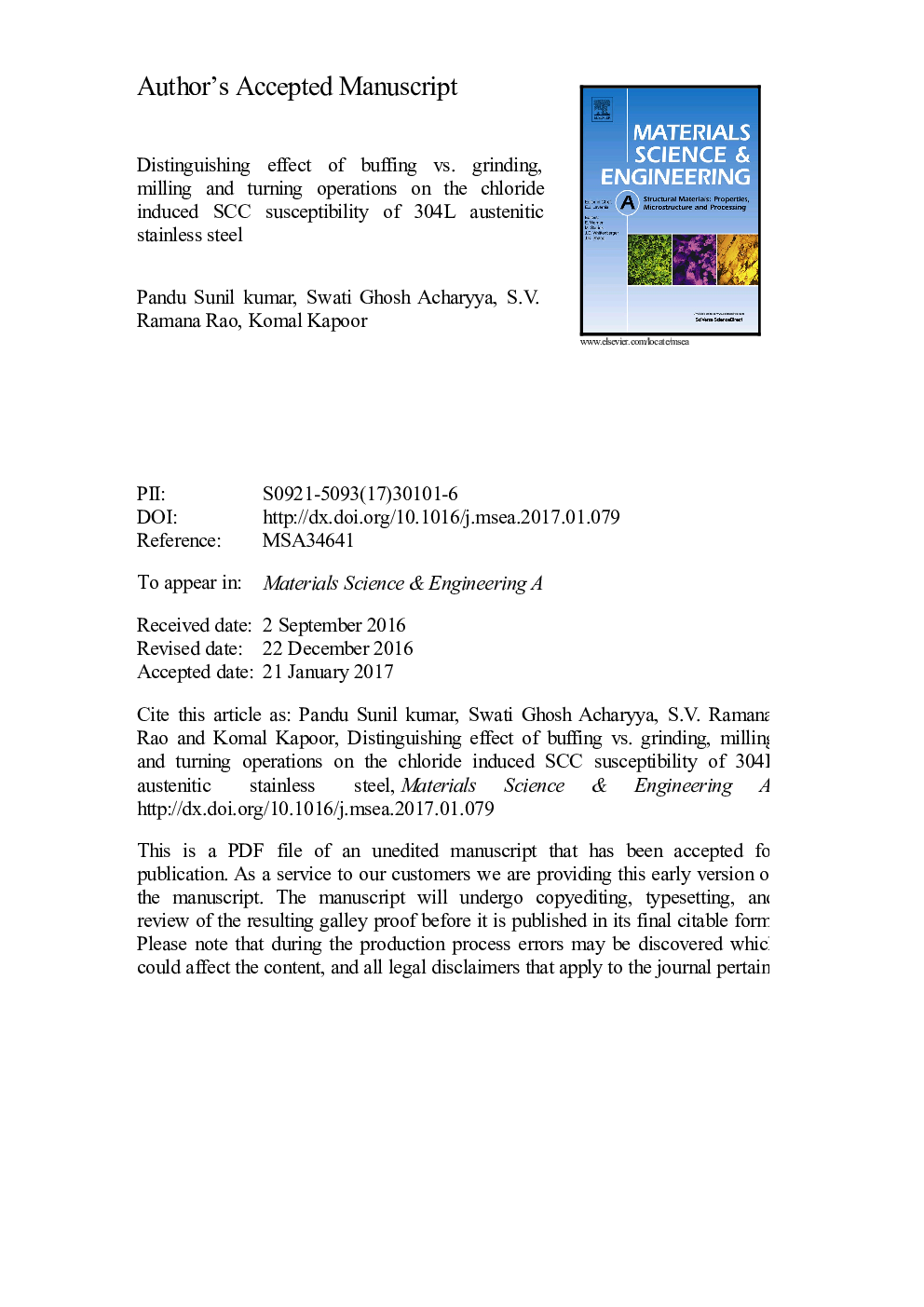| Article ID | Journal | Published Year | Pages | File Type |
|---|---|---|---|---|
| 5456255 | Materials Science and Engineering: A | 2017 | 18 Pages |
Abstract
The study compares the effect of different surface working operations like grinding, milling, turning and buffing on the Cl- induced stress corrosion cracking (SCC) susceptibility of austenitic 304L stainless steel (SS) in a chloride environment. SS 304L was subjected to four different surface working operations namely grinding, milling, turning and buffing. The residual stress distribution of the surface as a result of machining was measured by X-ray diffraction. The Cl- induced SCC susceptibility of the different surface worked samples were determined by testing in boiling magnesium chloride as per ASTM G36 for 3Â h, 9Â h and 72Â h. The surface and cross section of the samples both pre and post exposure to the corrosive medium was characterized using optical microscopy, scanning electron microscopy (SEM). The study revealed that grinding, milling and turning operations resulted in high tensile residual stresses on the surface together with the high density of deformation bands making these surfaces highly susceptible to Cl- induced SCC. On the other hand buffing produces compressive residual stresses on the surface with minimal plastic strain, making it more resistance to Cl- induced SCC. The study highlights that the conventional machining operations on 304L SS surfaces should be invariably followed by buffing operation to make the surfaces more resistance to SCC.
Related Topics
Physical Sciences and Engineering
Materials Science
Materials Science (General)
Authors
Pandu Sunil Kumar, Swati Ghosh Acharyya, S.V. Ramana Rao, Komal Kapoor,
